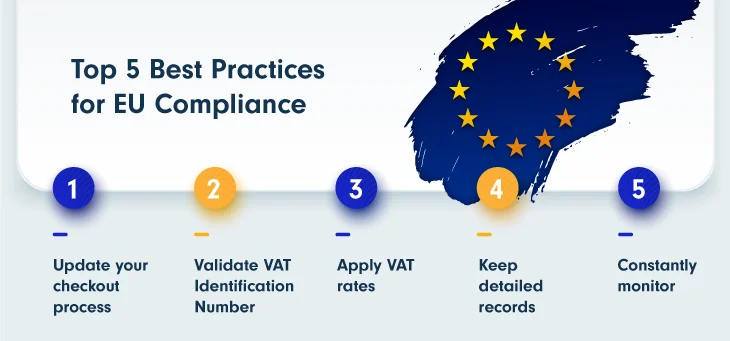Ah, Value Added Tax (VAT) compliance – the bane of many a European Union (EU) country’s existence. Despite the EU’s best efforts to streamline tax systems and ensure uniformity, some nations seem to treat VAT compliance as an unsolvable mystery, akin to decoding ancient hieroglyphics. Why is it that certain EU countries struggle so mightily with something that should, in theory, be straightforward? Let’s dive into the labyrinthine world of VAT compliance and uncover why some nations just can’t seem to crack the code.
VAT: An Unsolvable Mystery for Some EU Nations
For some EU countries, VAT compliance is like trying to find a needle in a haystack while blindfolded. It’s not that they don’t try; oh, they try. But the myriad of rules, regulations, and exemptions turns the process into a bureaucratic nightmare. The complexity of the EU VAT system, with its varying rates and thresholds, makes it a Herculean task for these nations to keep up. It’s almost as if the system was designed to be as convoluted as possible, just to keep everyone on their toes.
Then there’s the issue of technology – or the lack thereof. While some countries have embraced the digital age and implemented advanced systems for tracking and collecting VAT, others are still stuck in the analog era. This technological lag creates inefficiencies and opens the door for errors and fraud. It’s like trying to run a marathon in flip-flops – you’re bound to trip up eventually. The digital divide within the EU only exacerbates the challenges of VAT compliance for those lagging behind.
Let’s not forget the human element. Corruption and lack of training within tax authorities can severely hamper VAT compliance efforts. In some countries, it’s not uncommon for tax officials to be undertrained, underpaid, and overwhelmed. This trifecta of trouble creates an environment where mistakes are rampant, and enforcement is weak. It’s almost as if some countries have resigned themselves to the fact that VAT compliance is an unattainable dream, and they’ve stopped trying to reach it altogether.
Who Knew Tax Compliance Could Be This Challenging?
One might think that with all the resources at their disposal, EU countries would have VAT compliance down to a science by now. But alas, the reality is far from it. The sheer volume of transactions and the complexity of cross–border trade make VAT compliance a logistical headache. It’s like trying to conduct a symphony with half the orchestra missing – the result is a cacophony of confusion and chaos. Even the most well-intentioned nations find themselves bogged down by the intricacies of the system.
Moreover, the constant changes in VAT rates and regulations across different countries add another layer of complexity. Keeping up with these changes is like trying to hit a moving target while riding a roller coaster. Businesses and tax authorities alike struggle to stay updated, leading to discrepancies and non-compliance. It’s a never-ending game of catch-up, and some countries are perpetually lagging behind.
And then there are the loopholes. Ah yes, the ever-present, ever-exploitable loopholes. Some EU countries have more loopholes in their VAT system than a block of Swiss cheese. These gaps in the system are a magnet for fraudsters and tax evaders, making compliance even more challenging. It’s as if the system was designed with built-in escape routes, just to keep things interesting. As long as these loopholes exist, achieving full VAT compliance will remain a distant dream for some nations.
In conclusion, VAT compliance in the EU is a tale of two extremes – those who have mastered the art and those who are still struggling to find their footing. The complexity of the system, coupled with technological disparities, human factors, and ever-changing regulations, makes VAT compliance a daunting task for some countries. It’s almost as if the universe conspired to make tax compliance as challenging as possible. Until these nations can untangle the web of VAT regulations and close the loopholes, they will continue to grapple with this unsolvable mystery.
